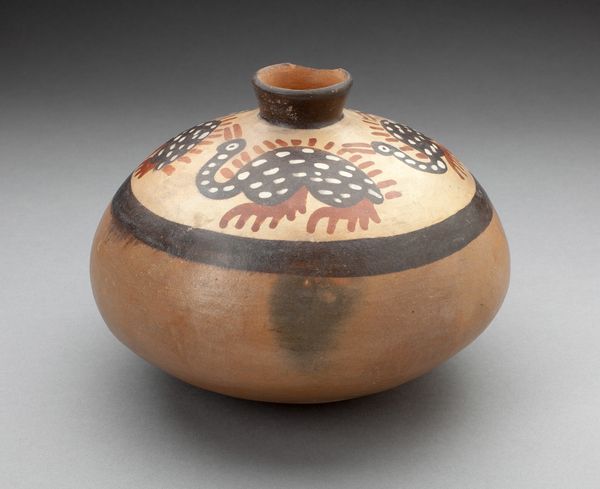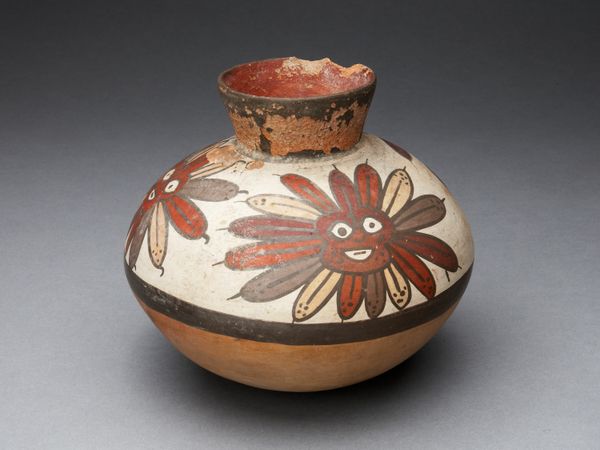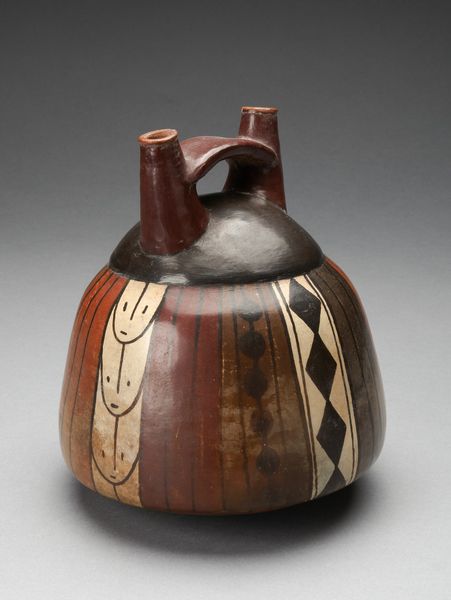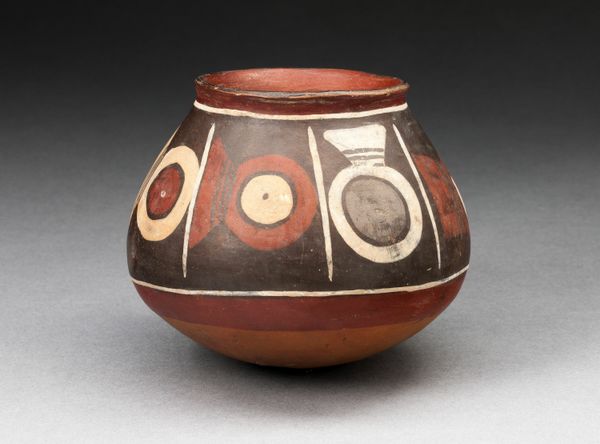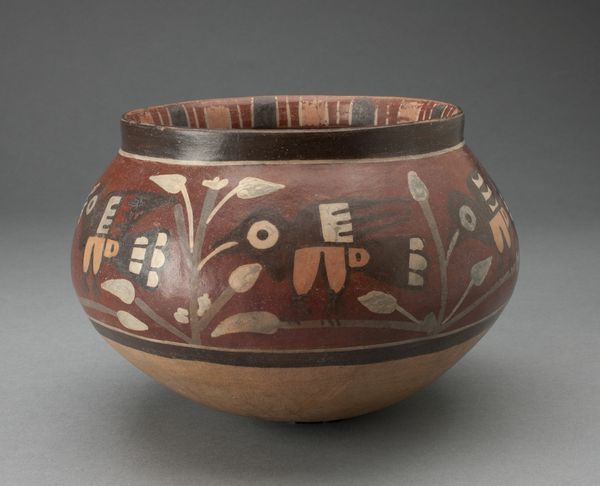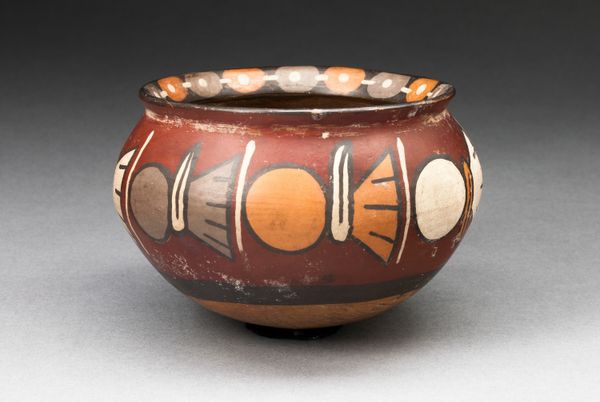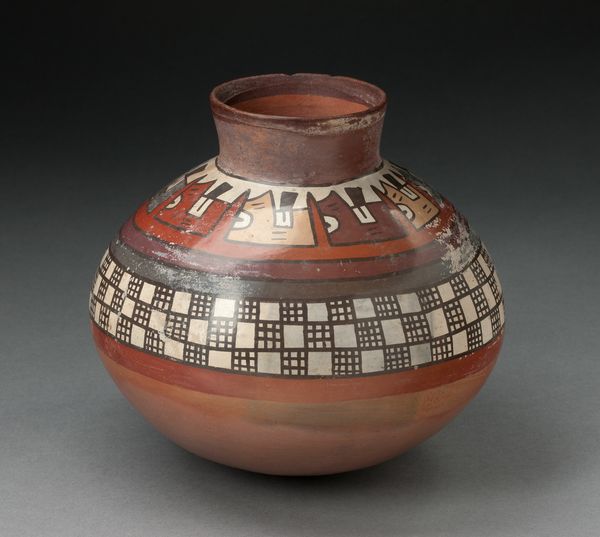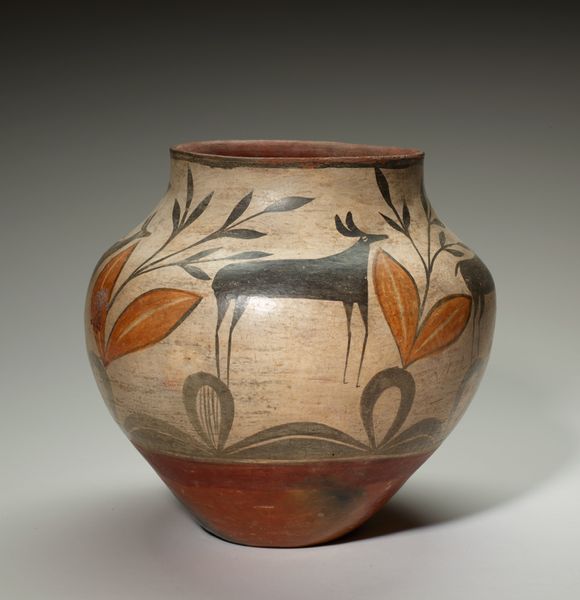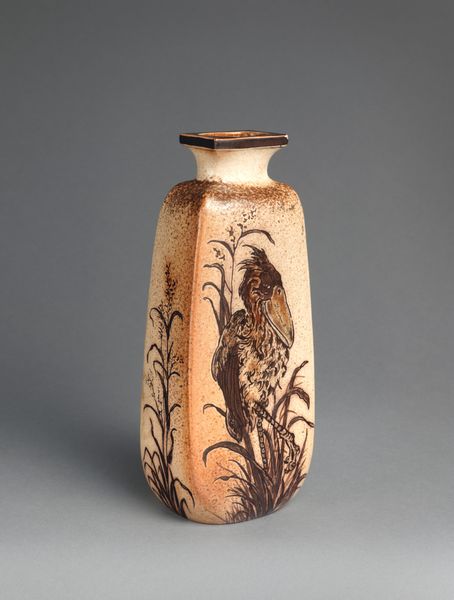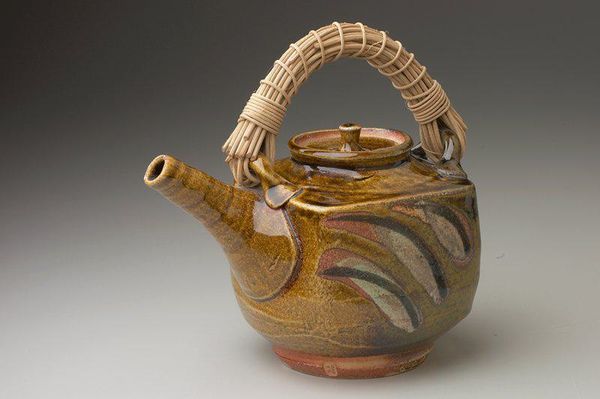
mixed-media, ceramic, earthenware
#
mixed-media
#
ceramic
#
abstract
#
earthenware
#
stoneware
#
geometric
#
ceramic
#
decorative-art
#
modernism
Dimensions: 7-1/4 x 6-1/2 x 6-1/2 in. (18.4 x 16.5 x 16.5 cm)
Copyright: No Known Copyright
Curator: This is Brian Persha’s Covered Jar, crafted sometime between 1980 and 1990. You can find it here at the Minneapolis Institute of Art. It's predominantly ceramic earthenware, but incorporates mixed-media elements. Editor: My initial thought? A slightly unsettling balance of folksiness and formalism. I’m drawn to the different textures and finishes, though. It makes me wonder about the intended function, practical or purely decorative? Curator: That’s a great starting point. The jar challenges the hierarchy often imposed on ceramics by the fine art world. Think about the labor involved: shaping the clay, the glazing process, even the firing – all physical acts that merge 'high' art aspirations with 'low' craft traditions. Editor: True. And considering it was made between 1980 and 1990, we can't ignore the postmodern influences. The piece seems to reject the sleek minimalism often associated with earlier modernist ceramics, instead opting for playful asymmetry and these distinct, almost colliding geometric patterns. Curator: Precisely. It also reflects a wider art market shift, an increased appreciation for studio pottery and craft as a viable art form. Galleries and museums slowly started including these objects, challenging traditional classifications. Editor: It is definitely telling a story. I see those different sections almost as geographic landmarks: a desert plain dotted with vegetation morphing into a watery world and its associated symbols, demarcated through lines in the sand that divide one set of social practices from another. Do you see those sharp contrasts? Curator: Absolutely. The contrast really draws attention to the processes employed: the perfectly symmetrical spots achieved perhaps by painstaking dotting. Then, that interesting pattern with its controlled oozing around its borders is very curious. It certainly seems deliberately designed to showcase those labor intensive methods. Editor: I wonder how museum audiences received work like this at the time? Did it spark debate about artistic value? Curator: Certainly, the blurring lines between art and craft led to critical discussions, particularly concerning originality and the artist's hand versus the mass production implications inherent to some ceramic techniques. This piece serves as an example for exactly those arguments, in how it challenges preconceptions on what defines artistic "worth." Editor: So, in thinking about Persha’s “Covered Jar”, it is both a conversation piece on value as much as a purely decorative container. A true commentary on the status of art in those changing decades of the late 20th century. Curator: Indeed, it asks us to think critically about the history, labor, and marketplace that ultimately give this beautiful and unique piece meaning.
Comments
No comments
Be the first to comment and join the conversation on the ultimate creative platform.
